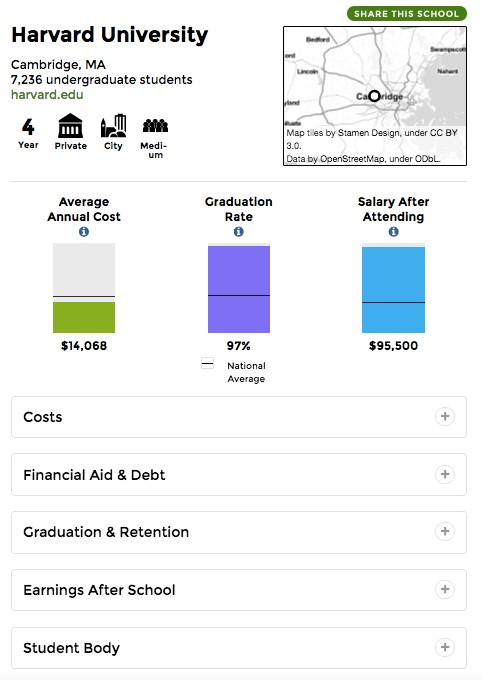No products in the cart.
Posts
Keeping Score on College Performance
Here’s something you should know about — the College Scorecard website. You can visit it at https://collegescorecard.ed.gov/. This simple tool could be a fantastic addition to your current College and Career Planning program and empower both students and parents alike to make informed decisions about the future.
It’s one of the quiet legacies given by the outgoing Obama Administration. I think every school counselor and high school student should know how to use it.
This web resource allows you to quickly plug in a college or university name. You can also look at schools by the programs they offer, location, size, or degree type. For each school, you see a simple graphic individuating the average annual cost of attendance, the school’s graduation rate, and the average earnings after attendance. 
When the U.S. Department of Education first started exploring the concept of a scorecard a few years ago, they wanted to use the scorecard to rate schools in terms of how much “value” they delivered. But this approach received tremendous pushback as to whether the government could do this fairly, taking into account all the variations among school resources and differences among their student bodies.
Instead, the DOE opted for just sharing the data, and leaving it to the user to make the cost-benefit-value evaluation. Still, even with the scaled back version, some experts advocated for the tool, and some in the higher education community continued to express reservations.[1]
I spent some time exploring the site, by looking at the state universities in Maryland, and saw a range of graduation rates from 66% from a few of the universities to 84% at our flagship campus. Average attendance costs were about $16,000 annually, and average earnings after attendance ranged from $42-60,000.
Community college graduation rates were substantially lower (at 10-15%), and average full time tuition was about half the cost of the university ($7,500) with an after attendance earnings of $36,000.
I also did a quick check of some for-profit trade schools and chain universities. I saw one trade school with a tuition about $19,000, but also a graduation rate comparable to Maryland’s state universities and about the same after attendance earnings. On the other hand, I looked at a for-profit college that was about $30,000 annual cost, but had about 10% graduation, and provided average earnings after attendance of $40,000. This kind of cost vs. results should raise big red flags.
The long and short is – every individual school – public university, community college, private college, for-profit-trade school, should be viewed as an individual institution, and its data reflects a mix of the student characteristics and institutional quality.
To use the site, students should be informed about how the data is gathered, and learn how to use data as perhaps one of several factors in their overall decision. There’s a handy “how to use” guide that you can download to use with staff and students, as well as an introductory video and toolkit.
To sum up — make sure that your school counselors, students, and parents know about the College Scorecard. Anything we can do to help every student make a well-informed decision about education and training after high school is well worth the investment.
Let me know if you’ve already started using the College Scorecard!
[1] Adams, Caralee (2015), “New federal college data elicit praise,” Education Week, September 29, 2015. Retrieved at: http://www.edweek.org/ew/articles/2015/09/30/new-federal-college-data-elicit-praise-skepticism.html

